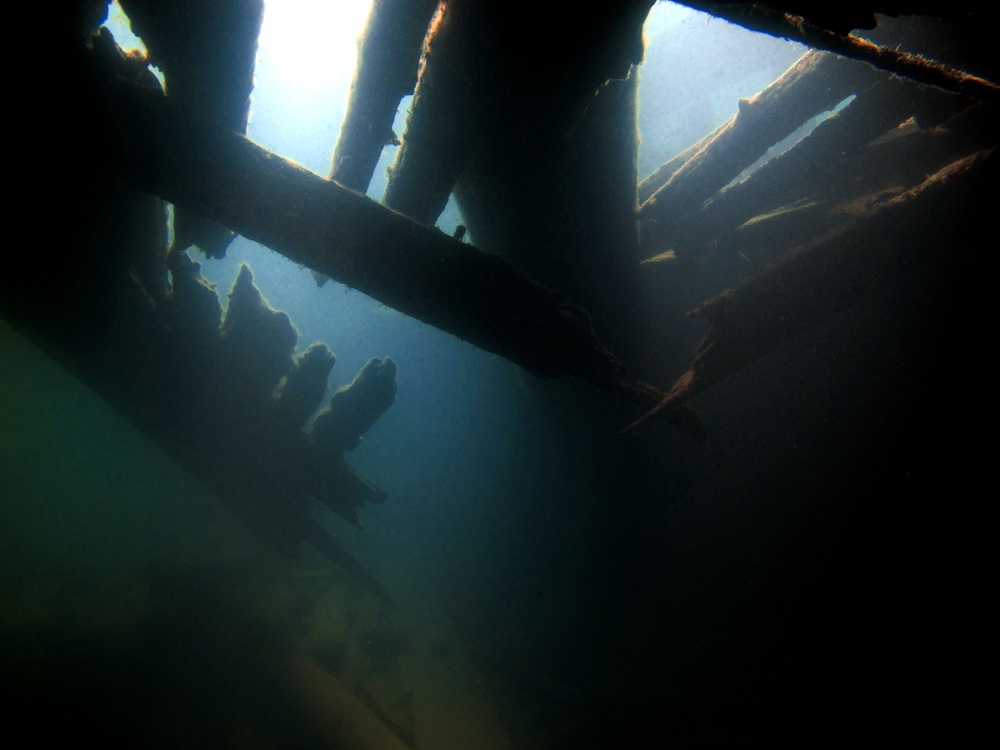On May 4, 1891, the Atlanta — a schooner— was in tow behind the Wilhelm — a steamer — when strong winds snapped the towing cable connecting the two ships. With no sails, the Atlanta sank 650 feet below the surface. The shipwreck is in excellent condition due to the frigid waters the ship settled in, according to the Great Lakes Shipwreck Historical Society.
In early 2022, the Great Lakes Shipwreck Historical Society announced that the remains of the 172-foot-long schooner had been located in Lake Superior just over 130 years after it sank. A research team identified the long-lost vessel using sonar and images from a remote-operated vehicle.
Shipwrecks like the Atlanta continue to amaze us, so we’re taking a closer look at how ships sink.
How a Ship Sinks
There are numerous reasons as to why a ship could sink. The main being flooding and poor weather conditions leading to a loss of stability, according to Marine Insight.
The Titanic struck an iceberg in history’s most famous shipwreck, leading to a sudden influx of water inside the ship. The ship then lost its buoyancy and went down in the northern part of the Atlantic ocean.
In the case of the Atlanta, stormy weather was the culprit. All three of the schooner’s masts were reportedly broken off during the storm, and once the towing cable between the Atlanta and the Wilhelm snapped, there was no way for the Atlanta to stay upright.
All ships have a metacentric height, which is defined as the distance between the metacentre of the ship and its vertical center of gravity. As long as this distance remains positive, that is, the ship’s metacentre doesn’t dip below its vertical center of gravity, and the ship should remain stable.
However, with the Atlanta, it’s likely that high winds from the storm tipped the boat enough so that its metacentre dipped below its vertical center of gravity. Once that happened, the boat flipped completely, and the crew was forced to abandon ship.
Great Lakes Shipwrecks
The Atlanta is far from the first well-preserved shipwreck found in the Great Lakes. An estimated 6,000 ships have been lost to the rough waters, with around 1,500 on Lake Michigan.
The primary reason for shipwrecks on the Great Lakes is stormy weather, specifically in the upper portions of Lake Michigan, Lake Huron and Lake Superior. In the late fall and early winter, weather can be particularly treacherous. Most Great Lakes shipwrecks occurred in the late fall.
According to the National Weather Service, it is not uncommon for powerful storms to move through the Great Lakes region. Chilly arctic air flows down from the Rocky Mountains and across the Great Plains, just as warmer air and moisture flow up from the Gulf of Mexico. These two streams combine to create dangerous storm systems on and around the Great Lakes.
Ultimately, these storms create unnerving travel conditions for ships on the water. Buoys have recorded waves as high as almost 30 feet on Lake Superior. For ships in the late 1800s, such as the Atlanta, these conditions played a large part in their demise.


